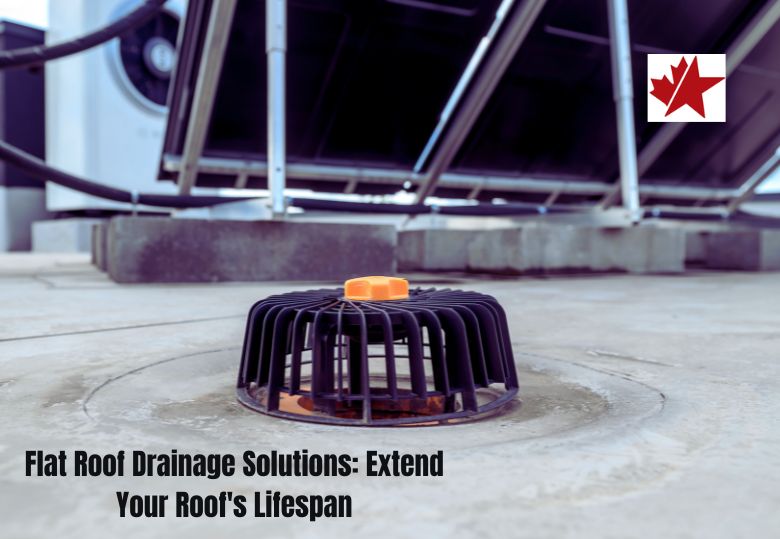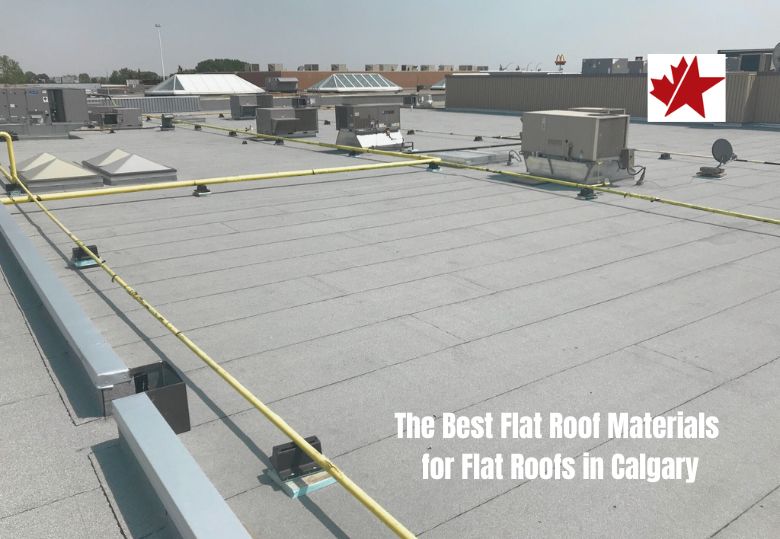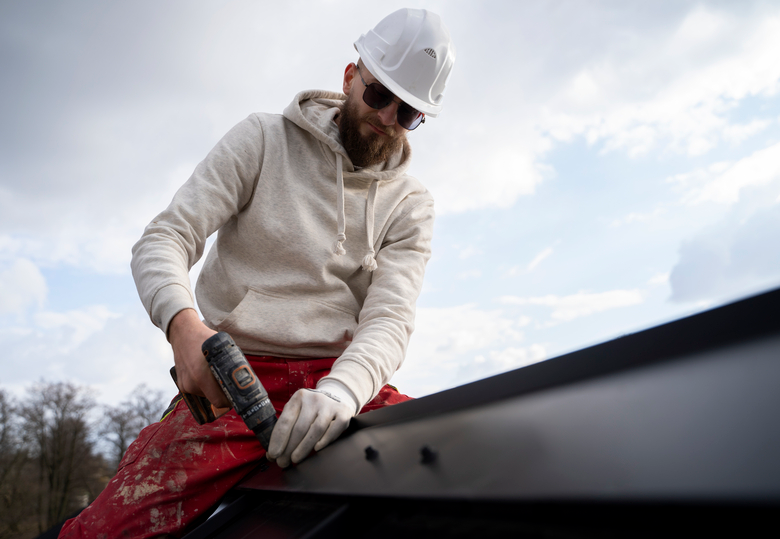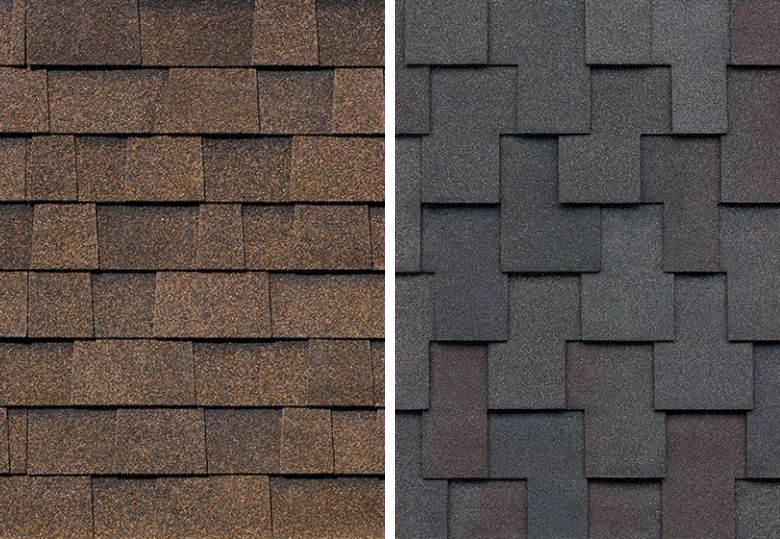Roof flashing is a thin material made of metal or rubber that is installed on a roof to keep water out of the joints, edges, and other vulnerable areas – like chimneys, skylights, and walls.
Roof flashing helps to protect the interior of a building from leaks, mould growth, and other water infiltration problems.
Flashing is installed by professional roofing contractors during the installation or repair of a roof and may need to be replaced periodically as part of routine roof maintenance.
Roof Flashing Repairs and Costs:
There are different types of flashing, including vent flashing, skylight flashing, flat roof flashing, and chimney flashing. Each type of flashing has its own unique set of costs and challenges when it comes to repair and maintenance:
Chimney Flashing
Chimney flashing is a protective layer that helps prevent water from entering the roof and chimney seam.
Over time, flashing may become damaged and require repair or replacement.
Repairing flashing typically ranges from CA$200 to $1,500, while replacement can cost between CA$400 and $2,500.
However, the cost depends on the flashing material, the size and type of the chimney, the configuration of the roof, the extent of the damage, and any necessary inspections and cleanup all affect the cost.
Skylight Flashing
Re-flashing a skylight typically ranges from CA$300 to CA$800. This process involves an in-depth method of weather-proofing and sealing to secure the seam between the skylight frame and the roof.
Although the majority of flashing methods rely on tape and caulking, there are some advanced options available that utilize specialized foam. However, more advanced materials may cost more.
Flat Roof Flashing
Flashing is used on a flat roof to create a watertight seal at areas where the roof intersects with other structures, such as walls, chimneys, skylights, or vents.
However, flat roof flashing may be damaged over time due to wear and tear or impacts during storms or other extreme weather events.
Repairing flat roof flashing typically costs between CA$350 and CA$2,500, depending on the materials you use and the extent of any damage or repairs needed.
Flashing Kits & DIY
Flashing kits can be affordable for those who want to tackle the flashing repair or replacement job themselves.
Numerous retailers provide flashing kits with prices ranging from only CA$100 to CA$250 or more! These kits typically come with all the necessary components for a complete flashing system, including the flashing sheets, caulking, and screws.
When choosing a flashing kit, it’s important to ensure it is designed for your specific type of flashing repair. For example, some kits are designed specifically for skylights, while others are meant for chimneys or vent pipes.
Before attempting a DIY flashing repair, assess your skill level and experience with roofing work. While some flashing repairs may be straightforward and easy to complete, others may require more skill and experience to install properly.
When in doubt, hire a professional!
What is Electrical Roof Flashing?
Electrical roof flashing is a type of flashing that is specifically designed for electrical installations on the roof. It is used to seal any openings in the roof where electrical wiring, conduits, or other electrical components pass through.
The electrical roof flashing is made of durable and weather-resistant materials, such as aluminum or galvanized steel, to ensure that it can withstand exposure to the elements.
It is installed around the electrical components to provide a watertight seal and prevent water from penetrating the roof.
What is Pipe/Vent Flashing?
Pipe flashing is used around vent pipes that protrude through your roof. Over time, pipe flashing can become damaged due to weather, age, or other factors. Repairing pipe flashing typically involves removing and replacing the damaged flashing with new material.
What is a Perma-Boot?
A Perma-Boot is a durable and long-lasting solution for repairing roof leaks that are caused by vent pipes penetrating the roof. This two-piece pipe boot repair system is specifically designed to fit over the existing roof vent boot, preventing future leaks and the need for messy caulking or sealant.
The Perma-Boot is compatible with a range of roofing materials, including composite shingles, and is suitable for use with standard roof pitches ranging from 3/12 to 12/12.
Its gasket-less design ensures a reliable and leak-free seal that will last for the life of your shingles, protecting against water damage to your home’s interior.
In addition to repairing existing leaks, the Perma-Boot can also be used as a preventative maintenance product, guarding against future roof leaks and damage to your home. Its durable construction ensures it will withstand all weather conditions, including heavy rain and snow.
What Materials are Used for Roof Flashing?
Flashing materials vary, but some common options include aluminum, copper, and galvanized steel.
Copper is a highly durable material that is resistant to corrosion and rust, making it an ideal choice for roof flashing. It is easy to work with, bendable, and can fit most roof shapes! Copper also provides a great watertight seal that lasts long with little maintenance.
However, copper can oxidize and lose its luster after a long time.
Aluminum, on the other hand, is more affordable and easy to install. It is lightweight and can be a reliable barrier! However, it may not be as durable as copper and may require more maintenance later.
Make sure you choose the roof flashing material that is right for you!
How Does Metal Roof Flashing Get Damaged?
Exposure to harsh weather conditions, poor installation, or lack of routine maintenance can damage roof flashing.
Another is clogging gutters or downspouts, which can lead to water backup and overflow that may damage the flashing. Furthermore, the movement of shingles or other roofing materials can cause the flashing to shift or become dislodged. This can lead to gaps in the flashing that allow water to seep into the roof.
How to Prevent Roof Flashing Damage:
Have your roof installed by a professional who is experienced in working with your specific type of flashing and roofing materials.
Routine maintenance, such as regular cleaning of gutters and downspouts, can also help prevent damage to the flashing and ensure it remains in good condition.
In addition, homeowners should be vigilant in monitoring the condition of their roof and flashing and should address any signs of damage or wear and tear as soon as possible!
Have a Professional Repair Your Roof Flashing!
A professional repair of your roof flashing is highly recommended to ensure that the repair is done correctly and to avoid potential water intrusion and damage issues.
When in doubt, don’t DIY major roof flashing repairs!
Professional roof repair technicians have the necessary skills, training, and experience to perform repairs safely and effectively. They know how to diagnose and address roofing issues, identify potential hazards, and work with various roofing materials.





